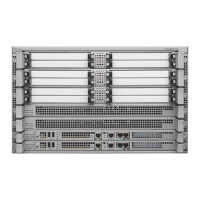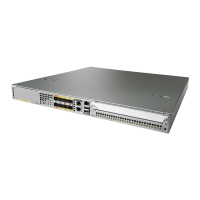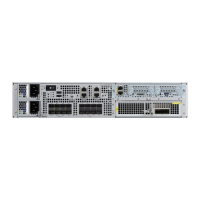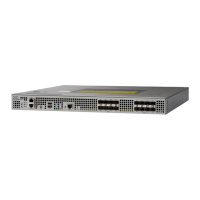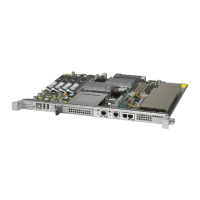27-18
Cisco ASR 1000 Series Aggregation Services Routers SIP and SPA Software Configuration Guide
OL-14127-08
Chapter 27 Classifying and Scheduling Packets for ASR 1000 Series
Information About Ingress Scheduling
proportional to its interface bandwidth. In Cisco IOS XE Release 3.1S, the SIP-10 scheduler, SIP-40
scheduler, and ESP scheduler ran in strict-priority mode. In this mode, if the high-priority queues of
either a participating SPA port or a participating SIP has data to send, these queues will be scheduled
first. The remaining bandwidth, if any, will then be shared among the low-priority buffers at a weight
that is proportional to the interface bandwidth or at a weight that is equal to the weight of all the SIPs.
The supported excess weight range from Cisco IOS XE Release 3.1S and onwards for intra-SIP
scheduling is as follows:
• SIP-10— 40 to 10000
• SIP-40— 40 to 10000
The supported minimum bandwidth range from Cisco IOS XE Release 3.1S and onwards for Inter-SIP
scheduling depends on the combination of SIP and ESP. Following is the range for minimum bandwidth
configuration for various combination of SIP and ESP:
• SIP-10 with all ESP: 1 Mbps to 11.2 Gbps
• SIP-40 with ESP10/ESP20: 1 Mbps to 11.2 Gbps
• SIP-40 with ESP40: 1Mbps to 23 Gbps on each ESI link
The supported excess weight range for inter carrier card scheduling (ESP level) is as follows:
• All ESPs— 50 to 100
Configuring Intra-CC Scheduling
By default, ingress packets that are classified as high-priority by a SIP or SPA, are processed first, and
then sent. After processing the high-priority packets, the available excess bandwidth can be shared by
low-priority packets depending on the weight assigned to the interface or to the SPA. Execute the
following commands to configure the weight on an interface or for the entire SPA:
SUMMARY STEPS
1. enable
2. configure terminal
3. interface gigabitethernet 0/0/2
4. plim qos input [wieght weight]
5. hw-module subslot slot/subslot qos input [weight weight]
6. show platform hardware {slot/subslot/port} plim qos input bandwidth

